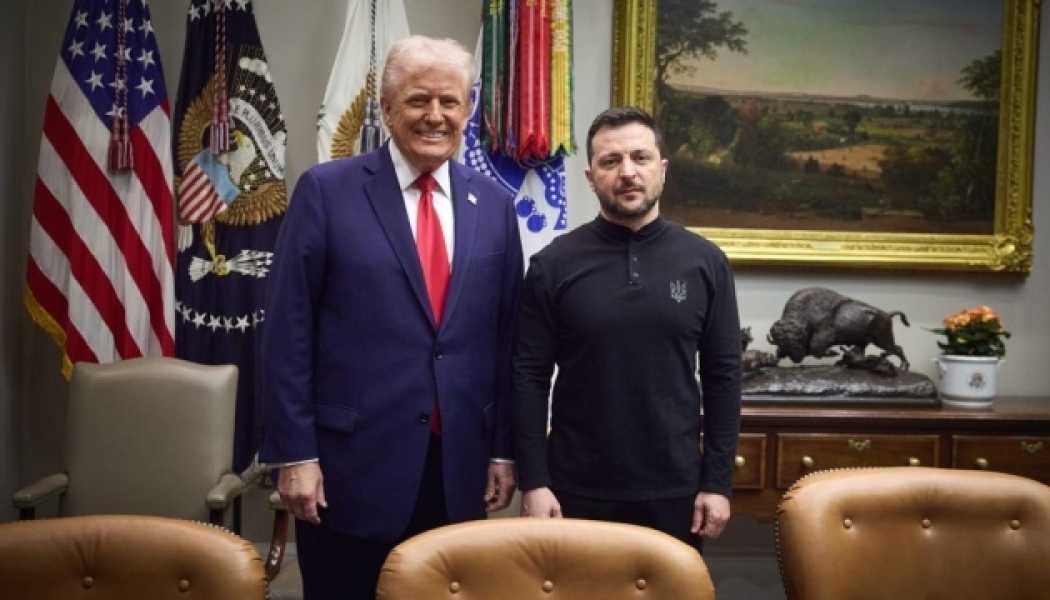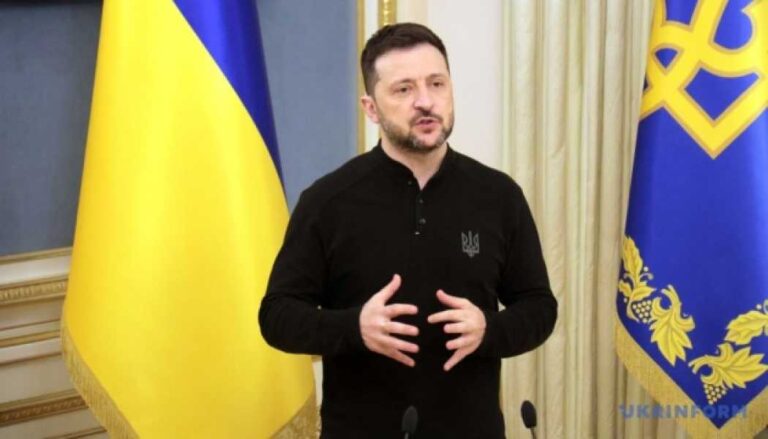Five Key Takeaways from Trump-Zelensky Call

On March 19, Ukrainian President Volodymyr Zelensky had a telephone conversation with US President Donald Trump, which lasted about an hour.
Ukrinform used artificial intelligence to compare official transcripts of this communication prepared by Kiev and Washington.
Zelensky's call to Trump marked the first formal, direct contact between the two leaders since a tense confrontation in the Oval Office late last month that prompted the Ukrainian president and his team to quickly leave the White House.
During the meeting, Mr. Trump and Vice President J.D. Vance expressed frustration with Mr. Zelensky for not showing enough gratitude for American support, much of it provided by President Joseph R. Biden Jr. The Trump administration temporarily suspended all military aid and intelligence sharing with Ukraine after the meeting, and Mr. Zelensky has since sought to improve relations.
Statements by Mr. Zelensky, Mr. Trump and their national security officials on Wednesday indicate that reconciliation efforts are beginning to bear fruit.
Before we move on to the analysis, it is worth noting an interesting fact. Using artificial intelligence, we compared the texts of official statements from the White House and the Office of the President of Ukraine. The result showed that their content is 75-80 percent the same.
We also analyzed the final statements from the White House and the Kremlin after Trump's phone call with Putin. Here, the level of agreement is significantly lower — 50–60 percent. The Russian version emphasizes what is beneficial to the Kremlin, while the American one appears more reserved and diplomatic.
Here are five takeaways from Trump and Zelensky's conversation that we found most significant.
First, the call was a stark contrast to Zelensky and Trump’s botched Oval Office meeting on February 28. The Ukrainian president described the conversation as “the most meaningful in a long time” and suggested it might have lasted longer if the leaders had not had other commitments.
Trump also praised the conversation, calling it “very good.” Overall, it can be concluded that relations between Ukraine and the United States are gradually returning to normal. This is an important step forward.
“The results of the negotiations were generally positive – the main fears were not justified. Events unfolded according to the usual scenario: first, the Ukrainian delegation successfully held negotiations with the US in Jeddah. The ball was in the Kremlin's court, which it did not like at all, since the paradigm of “Ukraine is disrupting the negotiations” collapsed. Then followed a two-and-a-half-hour telephone conversation between Putin and Trump. The Russian dictator tried to buy time: he seemed to agree to everything, but with conditions that look like a way to drag out the process. He did not take any real steps, trying to throw the ball to the side of Ukraine and the US,” comments Kirill Sazonov, an officer of the Armed Forces of Ukraine and a political analyst.
There were concerns that Trump could use this to put further pressure on Kyiv by presenting Zelensky with Kremlin ultimatums or by freezing military aid again. But that did not happen.
“The conversation was constructive and covered a wide range of issues. An important signal is that Trump's team is already clearly aware that Moscow is trying to manipulate the situation, using it in its own interests,” the expert emphasized.
Secondly, the American side will continue to exchange intelligence on defense issues with the Ukrainian side, despite the fact that Putin demanded that Trump stop such support for Ukraine. Moreover, Putin insisted on a “complete cessation of foreign military aid” to Kyiv. However, it seems that this “wish” of his will also remain unanswered.
Zelensky said he and Trump discussed the state of Ukraine’s air defenses and possible ways to bypass them. The White House confirmed the request, noting that the Ukrainian president had asked for additional Patriot interceptors and launchers. Trump responded by promising to “find them in Era.” Some may be skeptical that a promise is not a guarantee. But there is an important implication: Trump could have either rejected the request outright or not raised the issue at all. But he did mention the possibility of handing over the Patriots, which could be interpreted as a semi-agreement. And that is significant.
Let us recall that against the backdrop of the reduction of military aid to Ukraine, experts have repeatedly emphasized that Patriot interceptor missiles are the most important element of American support for Ukraine. Why? Because Patriot is, in fact, the only air defense system capable of intercepting ballistic missiles that the Russian Federation uses against Ukraine. Theoretically, Patriot could be replaced by the Franco-Italian SAMP-T, but their number in the world is limited, and the corresponding missiles are not produced in sufficient quantities.
Mikhail Samus, director of the New Geitics research network, explains: “The paradox is that at one time Germany and Panama chose Patriot as the main air defense system in the future European shield. Because of this, investments in the production of SAMP-T were insignificant, and at present these systems are insufficient.”
Third. In a conversation with Trump, Zelensky agreed to stop attacks on Russian energy facilities. But he stressed that if the enemy violates the agreement, Ukraine will not remain inactive, but will respond: “The answer will be ‘an eye for an eye.’” The President also noted that Ukraine will draw up a list of civilian and energy infrastructure facilities that must be protected from Russian attacks: “I told President Trump that it would be desirable for us to draw up a list
Source: ukrinform.net



